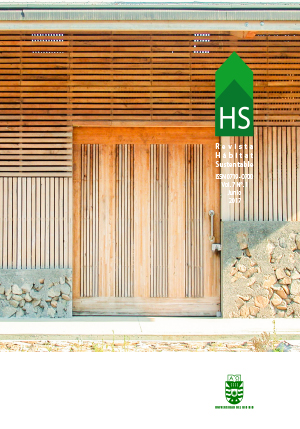The potential of zero energy demand in industrial envelopes: The case of vinification in areas of great thermal amplitude.
DOI:
https://doi.org/10.22320/07190700.2017.07.02.04Keywords:
energy management, product quality, vinification, thermal modelingAbstract
In this study, a mathematical model was developed for the real-time simulation of a winemaking envelope representative of the national vinification technology of reinforced concrete. Thermal monitoring of the wine stored inside this envelope and another of stainless steel was carried out using HOBO U-12 temperature sensors. The simulation studied the effect on the thermal stability of the wine and the thermal demand originating in the forced convection caused by breezes, under various cellar configurations. With the validated tool, a simple passive optimization was performed on the representative case. Finally, comparing the results of the optimized, simulated cases and the real cases, it was concluded that the representative case has a higher thermo-energy efficiency compared to the stainless-steel cases. Likewise, it was observed that the thermal stability of the wine with zero demand is feasible through the use of envelopes that are suitable for the climate analyzed; with simple optimization measures, this stability comes close to the zero-demand prototype sought after in reference models for energy management.
Downloads
References
Colombié et al (2006) Modelling of Heat Transfer in Tanks during wine-making fermentation. Food Control (18), 2007, págs. 953-960
Delves, T. y Weedon, M. (2007) Solar Heat gains on Outside wine tanks. The Australian and New Zealand Grapegrower & Winemaker (2007), pp 96-99
INSTITUTO NACIONAL DE ESTADÍSTICAS Y CENSOS (INDEC; 2008) http www.indec.gob.ar
Oreglia, F. (1978) Enología Teórico-práctica. Ediciones Instituto Seliciano de Artes Gráficas, Buenos Aires. Págs.185-204.
Ramos Sanz, Alba I. (2015) Reducción de la demanda térmica originada en la vinificación en bodegas localizadas en zona de clima árido, mediante modelado térmico semi-empírico. Revista Hábitat Sustentable Vol. 5, N°. 2. ISSN 0719 - 0700 / Págs. 06-19
Udaquiola, S; et al (2009) Mass energy balances in the wine industry. 2nd Mercosur Congress on Chemical Engineering.
Downloads
Published
How to Cite
Issue
Section
License
The content of articles which are published in each edition of Habitat Sustentable, is the exclusive responsibility of the author(s) and does not necessarily represent the thinking or compromise the opinion of University of the Bio-Bio.
The author(s) conserve their copyright and guarantee to the journal, the right of first publication of their work. This will simultaneously be subject to the Creative Commons Recognition License CC BY-SA, which allows others to share-copy, transform or create new materials from this work for non-commercial purposes, as long as they recognize authorship and the first publication in this journal, and its new creations are under a license with the same terms.











 Scientific Information Program/Concurso Fondos de Publicación de Revistas Científicas 2018/ Proyecto Mejoramiento de Visibilidad de Revistas UBB (Código:FP180007).
Scientific Information Program/Concurso Fondos de Publicación de Revistas Científicas 2018/ Proyecto Mejoramiento de Visibilidad de Revistas UBB (Código:FP180007).





